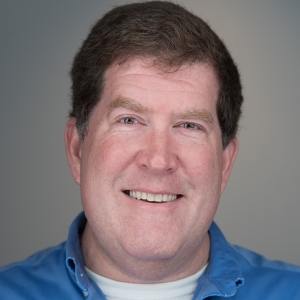The tracking of time, Chad Orzel writes in the introduction of his latest book, “A Brief History of Timekeeping,” is a signature preoccupation not just of modern society, but also of human civilization.
“The process of building and refining timekeeping devices has been one of the great drivers of progress in science and technology for millennia,” the author writes. “From Neolithic solstice markers through mechanical watches to ultra-precise laser frequency standards, we are and always have been a species that builds clocks.”
That is more than 5,000 years to unpack of the science and technology humans have used to track time. If anyone can deliver a fascinating, fun and engaging take on sundials and Su Song, it is Orzel, associate professor of physics and astronomy.
He’s proven to be quite adept at explaining complex subjects to non-scientists, in previous books “How to Teach Physics to Your Dog,” “How to Teach Relativity to Your Dog,” and “Eureka: Discovering Your Inner Scientist,” and in his regular blog entries for Forbes and Substack.
Orzel even offers something for those who are not intimidated by scientific content. Throughout the book, shaded bars along the sides of the page highlight sections that go deeper into the scientific principles underlying methods of timekeeping. The non-scientist may choose to skip those pages.
The American Physical Society recently honored Orzel as a member of the Society’s Fellows. Orzel was nominated in part for his work in improving the public's knowledge of and appreciation for physics.
Orzel joined Union in 2001.
When did you start writing the book?
The proposal was done in mid-2019, so the writing started in earnest around that time. I had been kicking the idea around for a while, though.
The book has its origins in a sophomore research seminar course at Union?
The actual first iteration of this idea was a guest lecture in an SRS taught by Anastasia Pease in English, who asked me to give a quick run-down on the science of time. I put something very general together for that and thought, “Hey, there's something here."
I pitched it as a possible SRS for the Scholars program. I have done it three times, in 2012, 2015 and 2018. The first time, I allowed students the option of doing standard library research papers, but the other two, I required them to do some sort of actual measurement of time or a timekeeping device as part of their final projects, and this has been a lot more fun. I have had students build and test sundials, build and test an impressive variety of water clocks, and test the performance of a bunch of kinds of watches. I think this ends up giving students a much more accurate sense of what research is like in the sciences - they are not just reading books; they're actually investigating the behavior of things in the real world.
How has the class been received by students?
It has gone over pretty well, overall; students have done some really nice and inventive projects. My favorite might be the student who decided to look into the effect of temperature changes on a pendulum clock, who built a long pendulum from a rod of plastic and measured its oscillation period both in the kitchen at Dutch Hollow and in the courtyard outside Reamer on a freezing-cold day, and saw a measurable difference between them. I have also had a couple of students make surprisingly elaborate water clocks, including at least one of a type I had never heard of before they proposed it.
How did you conduct research for the book?
A lot of internet searching, and a lot of ordering books through Schaffer Library. This was complicated by the fact that I was about four chapters into the first draft when COVID hit and everything shut down. I owe a huge debt to the librarians who pulled books from the stacks for me.
In doing research for the book, what was the most interesting thing you learned?
This was actually research for the class, but I was surprised to learn how recent an invention the sandglass is - in fact, hourglasses were invented right around the same time as mechanical clocks. The first depiction of something that is unambiguously an hourglass is in a fresco in Siena, Italy, from 1330, but the idea had probably been around for a good while before then, and the first mechanical clocks are also from the 1200s. That was surprising, because it seems like an idea that ought to be really ancient - water clocks date back to before 1500 BCE - but it was not in common use until surprisingly recently.
What do you hope the reader takes away from the book?
Two things: One, that our obsession with telling time is not a modern American development; it’s something that goes back thousands of years and turns up in basically every culture we have decent information about. Many of the oldest human structures we know of have a timekeeping function, with alignments that help keep track of the time of year. And the science of tracking time led to the development of sophisticated calendars and clocks in ancient cultures not only around the Mediterranean but in East Asia and the Americas, as well.
And two, that the modern science of timekeeping touches all sorts of areas of modern life, beyond using Google Calendar on your phone to keep your day on schedule is. The Global Positioning System that we use to navigate to new places or to play augmented reality games is based on time kept by atomic clocks, for example, so it has a very direct application. It also has some significant philosophical implications - the origins of the theory of relativity, and its dramatic revision of our understanding of time and space, are closely related to practical concerns regarding clocks.

